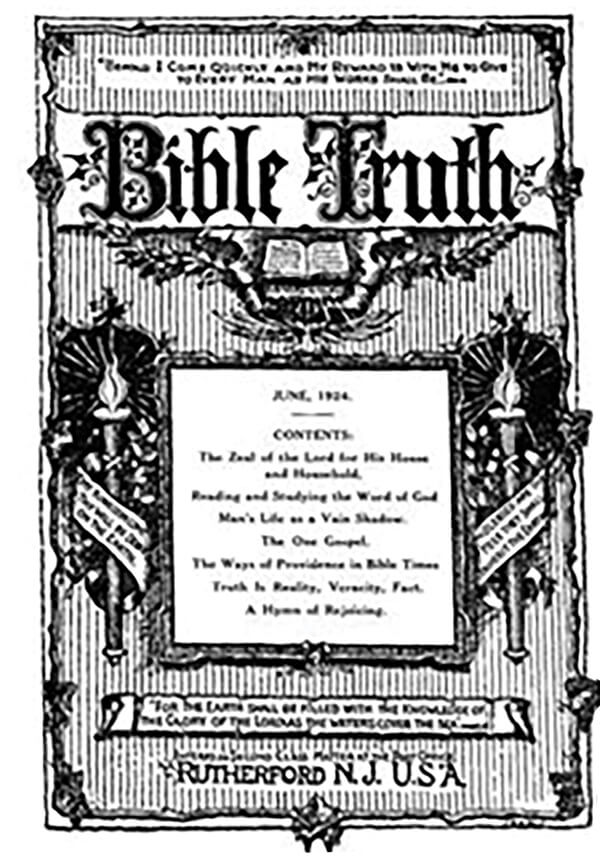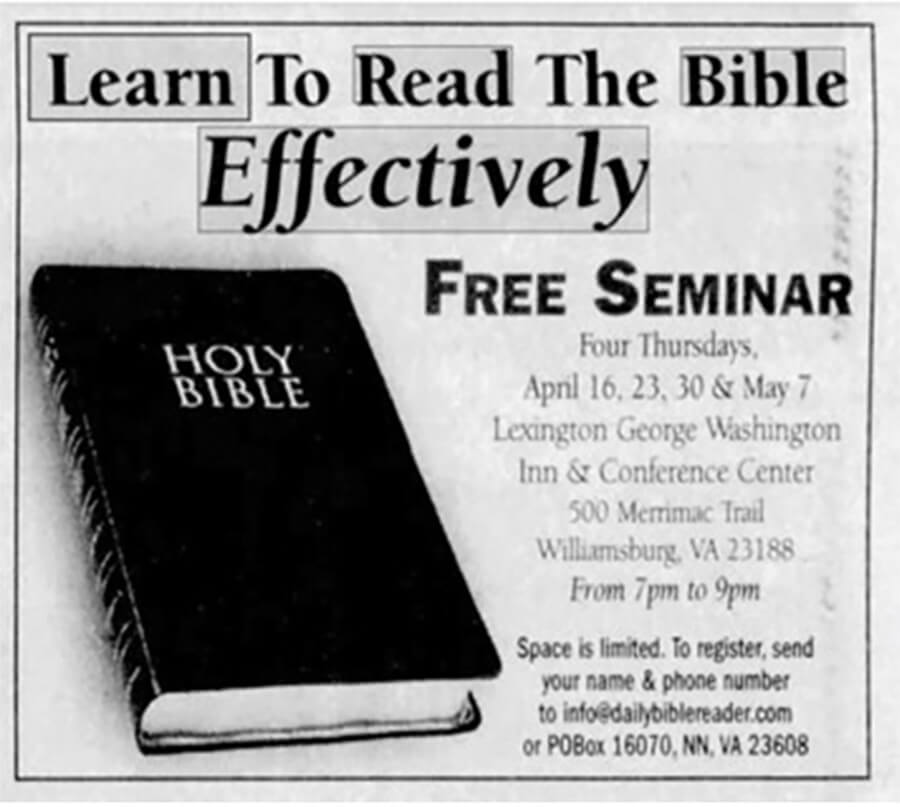170 Years of Preaching in North America
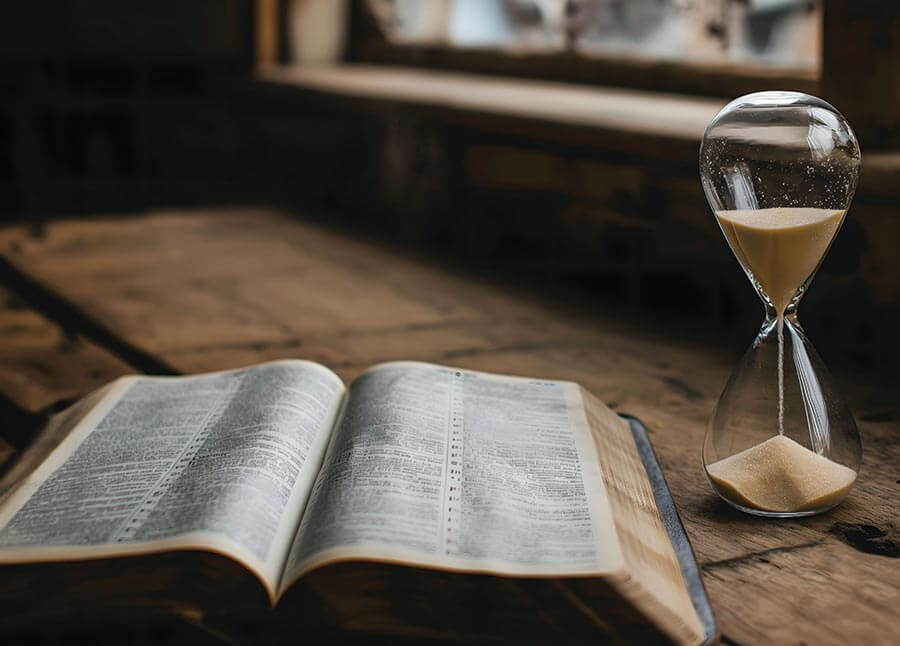
This article covers the attempts and various methods used by organizations, ecclesias and individuals to preach to the public. These methods invariably require individual members to bring those interested to truly know the gospel message. But this duty, although a vital part of each individual’s responsibility, is outside the scope of what I will cover. Also, many ecclesias have done immense work themselves to spread the gospel, but these valuable endeavors are far too numerous to cover in a brief article. So, I must, by and large, cover efforts that took place among multiple ecclesias.
many ecclesias have done immense work themselves to spread the gospel
Early Years
In 1854, 170 years ago, John Thomas visited near Henderson, Kentucky, located near the southwestern corner of Indiana. It was at the invitation of J. T. Norment, who had read Elpis Israel. This request prompted Dr. Thomas to make an eight-day journey, mostly by riverboat along the Ohio River, without any opportunity to change clothes. John Thomas gave a series of lectures there. And so, a typical early little ecclesia slowly formed, which still exists deep in rural Indiana.
As these little ecclesias developed, they found it essential to hire halls (or sometimes build them) to proclaim the gospel, which they usually did by advertising evening lectures in the local newspapers. Many of the existing advertisements of the time that can be found simply publicized Dr. John Thomas as a lecturer. Detroit in 1866 is the earliest “Christadelphian” ecclesia I can find that simply advertised their evening lectures.1 And so the tradition of evening lectures intending to invite “interested friends” to listen to Bible Topics was underway in North America.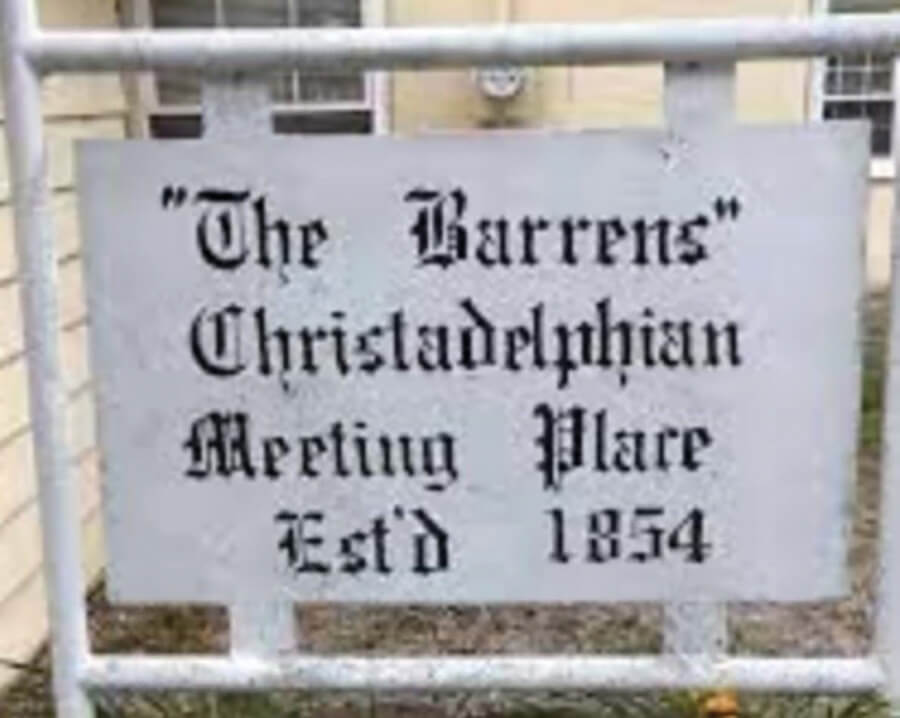
The ecclesias often held evening lectures. Others that did not, customarily held special efforts periodically, particularly when visiting speakers arrived. When Robert Roberts came through in 1871, he attracted large audiences of over 400, but only when they heavily advertised his lectures. As he said:
America may differ from England. An advertisement in a paper is not sufficient to attract attention to a lecture in England. We always issue large posters and handbills, in addition to advertisements, and in this way secure large audiences. We are persuaded America would be no exception as regards this result. At all points of the American tour, wherever effective publicity was given to the meetings, there were large audiences; and at all places where the announcement, or place of meeting was inadequate, the attendance was poor.2
An example of individual proclamation of the message was that of R. T. S. Powell of Hamilton, Ontario.
He [was] indefatigable in his efforts to call his neighbors’ attention to the truth, which his connection with the town, from youth upwards, has favored. He has canvassed his townsmen right and left, to subscribe to the Christadelphian. The result is a list of about 50 subscribers in Hamilton alone.3
Christian literature has been the main approach to preaching the message and establishing contacts for about a century. When ecclesias were more established, personal contact and well-advertised public lectures were used. In fact, I can remember delivering a lecture in the mid-1990s in a local library, not the ecclesial hall, on how archeology confirms the Bible.
About a dozen visitors stayed to talk, so the method was still working at that time. Unfortunately, advertising via the newspaper is no longer effective, and almost no one responds to hand-delivered or mailed flyers. As far as I can tell, only a few North American ecclesias hold a Sunday evening lecture, although two or three have Bible Hours or similar on Sunday afternoons.
Even in the UK, evening lectures have almost disappeared during this century. But it is a little sad that evening lectures have gone, as they served a useful purpose for our unbaptized children who mostly only heard the “first principles” taught in a systematic way by listening to them expounded during these lectures.
The Bible Truth
On rare occasions, you might come across old dusty Christadelphian magazines, and even more rarely, one called “Bible Truth.” It was the work of one brother, Gustav Aue, a prosperous coal merchant from New Jersey, and was almost totally a preaching magazine, like the Glad Tidings of the UK today. It seems to have been published primarily by himself.
He issued it from 1911 to 1935, and I would estimate he distributed nearly one million copies. Few remain, and as Bro. Gustav was opposed to Bro. Strickler’s teachings, he limited its circulation after 1923 solely to the “Berean” ecclesias in North America. There are reports of a few baptisms directly associated with its circulation, but one hopes the million distributed had a significant impact.
New Initiatives Start4
Unlike in the UK, there were locally coordinated preaching efforts in North America in the 1960s. Although many new approaches were tried from the 1930s on, it is difficult to identify their success. However, we will look at a few areas where individuals or many brethren and sisters were involved.
The period of the 1950s is difficult to cover succinctly, for many individuals were involved somewhat independently, and many organizations to help with preaching, both locally and continent-wide, came into existence at least for a while. In addition, the CBM in the UK was involved, at least from 1956 to 1968.
Vacation Bible Campaigns
In the UK, a grassroots movement by university students commenced. They held a concentrated preaching effort in 1935, with eight members holding lectures, accompanied by advertising posters, canvassing door-to-door and bill distribution, open-air speakers, and sandwich board processions.
This movement spread rapidly, and the campaign movement continues in the UK today. So, when John Carter, Editor of The Christadelphian Magazine, came to North America in 1953, he encouraged a group to organize teams of workers to go door-to-door with thousands of leaflets. Some campaigners went to work in the Baltimore area on the three-day Memorial Day weekend of 1954.
They began with a campaign in Canton, Ohio, with Bro. A. D. Norris. Other ecclesias and campaign committees started, including one in Victoria, BC, but no national committee existed. In the years 1954-1960, additional door-to-door campaigns were held in Moorestown, NJ, Meriden, CT, Canton, OH, and again in Baltimore. Other campaign committees and ecclesias held events, particularly on the West Coast, Texas, and British Columbia. The ALS and Christadelphian Bible Society (CBS) assisted some of these campaigns.
Later, in 1970, the Southern California ecclesias, under the aegis of the Pacific Coast Christadelphian Bible Mission, initiated a program called Truth Corps. Its first goal was to help with preaching in Panama City, Panama, where, for nine weeks, eight members canvassed and set up Bible Classes in homes. This concept expanded to Lompoc, CA, in 1973, where eleven members spent five weeks. At the end of this effort, sixteen people were studying for baptism.
Truth Corps helped more than in the immediate preaching support; it increased the focus of the ecclesia on preaching and reaching out to their local communities. However, the main benefit of Truth Corps was in the spiritual growth of the team members.
After observing a Truth Corps team member upon his return, a brother mentioned that it effected five years of spiritual growth in him during that summer. When someone returned from their Truth Corps experience, they were different. They had spent a summer living in close contact with others, sharing in the household duties, putting up with the inconveniences in a crowded house, and spending a good part of each day generating and visiting contacts with a presentation and other preaching activities. Added to this was the close and intimate discussion of their experiences as a team. Spiritual growth was almost inevitable.
ALS and ASK Movement
The North American Branch of the UK ALS (Auxiliary Lecturing Society) began in 1955, with eight Ontario and two US border ecclesias. Various efforts were held in Canada for the next few years, with some campaigns organized. The only active branch appears to have been in the Pacific Northwest, but there seems to be no activity after 1970.
In April 1961, The Christadelphian Magazine carried this news item:
Perhaps the most significant news out of New England for 1960 and for many previous years, is the formation of a joint committee by the ecclesias here, named A.S.K. for the Advancement of Scripture Knowledge. The purpose of this committee is to expand the work of the ecclesias here into all of New England… We hope that others will be encouraged by the formation of this group to press their efforts into the great voids of the U.S.A.5
The ASK (Advancement of Scriptural Knowledge) name was quickly embraced by the brotherhood. It came to be associated with a wide range of preaching initiatives, and additional “ASK Committees” appeared in several parts of North America.
While the ASK movement has not filled much of the ecclesial voids of New England or anywhere else in the past 50 years, it has produced some lasting results and has fired much enthusiasm for preaching. The latter has been one of its strong points. One brother put his finger on a vital reason for ASK’s success. He identified the emphasis on personal preaching, cooperation between workers in all stages of the scheme, and the contagious enthusiasm of each individual.
The New England ASK and the Mid-Atlantic ASK were both active for many years. New England sponsored a trailer and a booth at the Eastern States Exposition from 1970 until 1990. Both organizations appear to have been affected by the COVID-19 pandemic.
Across the border in Canada, the Great Lakes ASK was formed in 1969 and still is active in the Toronto area. In the Maritimes, the Atlantic Provinces section was formed in 2006 and is still active among the remote, scattered ecclesias in that area.
Work by the UK CBM and the Christadelphian Bible Society (CBS)
Soon after the formation of the UK Christadelphian Bible Mission (CBM) in 1955, its attention turned to the North American continent, where so many states and provinces had so few, if any, Christadelphians. In 1956, Bro. A. D. Norris attended a campaign along the English style in Canton, Ohio, with a dozen campaigners.
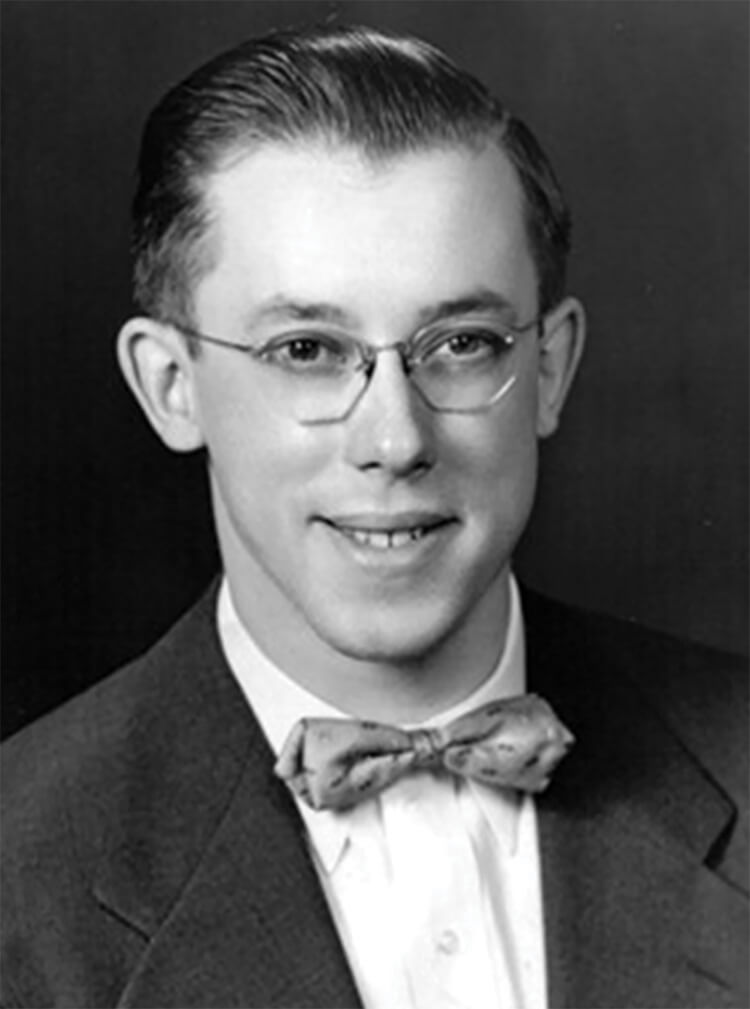
In addition, a little later, newspaper advertising in areas remote from any ecclesia was started, offering correspondence courses in association with the work of Bro. Dennis Ford of the Pittsburgh Ecclesia. In 1961, Bro. Ford started the Christadelphian Bible Society, CBS, which published a newsletter detailing the efforts supported by the CBM in the USA.
The major effort was the work in Piketon, OH, a town in the middle of Ohio, more than 200 miles from any ecclesia. Many visitors attended the lectures held in a rented building, but by 1965, interest dwindled. Despite the sad death of Bro. and Sis. Ford in a car accident in 1961 on the way to Piketon, the work of CBS continued in newspaper advertising, with some success. One individual could accomplish so much. Still, the need for collaboration of effort is evident as they saw the work on the East Coast slow down.
In 1968, The Bible Missionary reported:
Cooperation with other Christadelphian preaching organizations in North America is planned, and a joint committee with the North American Auxiliary Lecturing Society, and the New England Advancement of Scripture Knowledge (A.S.K.) group, has been formed. A joint fund for co-operative projects is being considered, and if this leads to positive results, it may be possible to relieve the Bible Mission of its share of responsibility for the work of the Bible Society.6
Most of the involvement of the UK CBM with the work in North America ended. Still, happily, the CBMA (Christadelphian Bible Mission America) and CBMC (Christadelphian Bible Mission Canada) were soon formed.
Bible Seminars
One would be hard-pressed to find a single development in the past 25 years that has had more impact on ecclesial outreach than the Bible seminar programs. Initiated in 1992 in the North Industry Ecclesia (now Paris Avenue) in Ohio, the seminars have largely changed the frame of reference for many ecclesias about outreach possibilities in their communities.
During the next few years, with no real organization or formal structure, the concept of Bible seminars swept rapidly across North America and elsewhere. Ecclesias, which found public lectures poorly attended despite persistent and faithful efforts instead, encountered an enthusiastic reception by the public of the “Learn to Read the Bible Effectively” seminar.
Over time, the seminar concept has been modified, and new courses have emerged to meet students’ interests. Many ecclesias made the seminar an annual part of their preaching program, supplemented with other important outreach activities. Ecclesias benefitted from the fruit of the seminars, including new members and an exciting new focus on the first principle truths that we hold dear.
Seminars work best with extensive advertising, which indicates the seminar is free for anyone who wants to “Learn To Read The Bible Effectively” and covers twelve weeks at the same time and place each week. Advertising also usually includes a map, a phone number to register with a real live person, and a mail-in form if they prefer not to call. Locations can be either a public hall or the local ecclesial hall. Although using a public hall can attract more attendees, it is less likely the initial attendees will attend follow-up sessions when held in the ecclesial hall.
Much written material is available, both for the beginning seminar and follow-up seminars, and these seminars are also available as videos. PowerPoint slides, student handbooks, and a teacher’s manual give suggested scripts. Most information available online at present is designed for a student, not for an ecclesia starting a seminar, but most websites will supply material if contacted.
Bible Exhibitions
In the UK, a Bible exhibition has been a regular yearly feature of many campaigns since about 1964. But in North America, it was 1985 before the Victoria, BC Ecclesia erected a similar one. More recently, Bro. Paul Billington in Ontario developed an exhibit, which is still occasionally used in Canada and neighboring US states. Although it is costly and requires much ecclesial effort, it has always been quite a successful draw, especially when linked with the 400th anniversary of the KJV Bible.
Radio and TV Work
Preaching via the radio began early in the United States and Canada. By 1927, a radio station in Seattle broadcast lectures every Sunday; this outreach continued for decades. At one stage, ten radio stations across the continent carried regular broadcasts at various times and days. In the 1970s, such methods transitioned into a half-hour TV program on Sunday afternoons, which, in Southern California, meant the programs were expensive to produce. For decades, renting a studio and hiring a director and professional staff was necessary to get a finished product.
If history teaches us anything, it is that change is ever with us.
With the advent of cable networks in the 1980s, the Southern California Radio-TV Committee found a new and lower-cost way to carry on with television broadcasting by taking advantage of public access channels and producing their own programs. After renting a TV studio for a day and building a set, a professional director led the five speakers through their sessions. The public access stations enabled the committee to use free airtime, but even so, the production costs were considerable for the studio equipment and hired staff.
Partnering with Bro. Jeff Wallace of the Boston Ecclesia in the 1990s, the next approach was to put together taping sessions to produce 26 programs each over a long weekend. The process in Boston was repeated in Houston, Pittsburgh, Detroit, Toronto, and Los Angeles. By purchasing advanced editing equipment, programs could now be assembled and edited at home instead of hiring an expensive studio.
This work continued for several years, but with the widespread use of low-cost video technology and the Internet, the use of studio videos seems to have almost disappeared by about 2007. How effective the recent proliferation of available Christadelphian videos is in preaching is unknown, but modern technology has a role to play in our preaching. Exactly how to implement it is up to the newer generations.
Social Media
Many North American ecclesias have web pages, and some of these have preaching information. There are also many ecclesial Facebook pages. Some of our brothers and sisters are just beginning to discover how Artificial Intelligence (AI) may be able to improve our preaching work.
Summary
If history teaches us anything, it is that change is ever with us. The only certain foundation is the Bible and its message. The message does not change, but how we spread it has and will continue to change. As some avenues close (evening lectures, newspaper advertising), others have opened and will continue to open. How we use them is reliant on ecclesial and individual efforts, with almost no regional or national support.
Peter Hemingray,
Pittsburgh Ecclesia, PA
-
John Thomas wrote his Constitution in 1854, including an order of service, but does not mention public lectures.
-
The Christadelphian, 1871 p. 349.
-
Op. cit, p. 248. See same quotation in Hamilton Greenaway Ecclesia Centennial article in this issue.
-
A Tidings Special Issue on “Preaching in North America,” August 2011, provided much of the information here.
-
The Christadelphian, 1961, p. 181.
-
The Bible Missionary, June 1968, p. 31.
